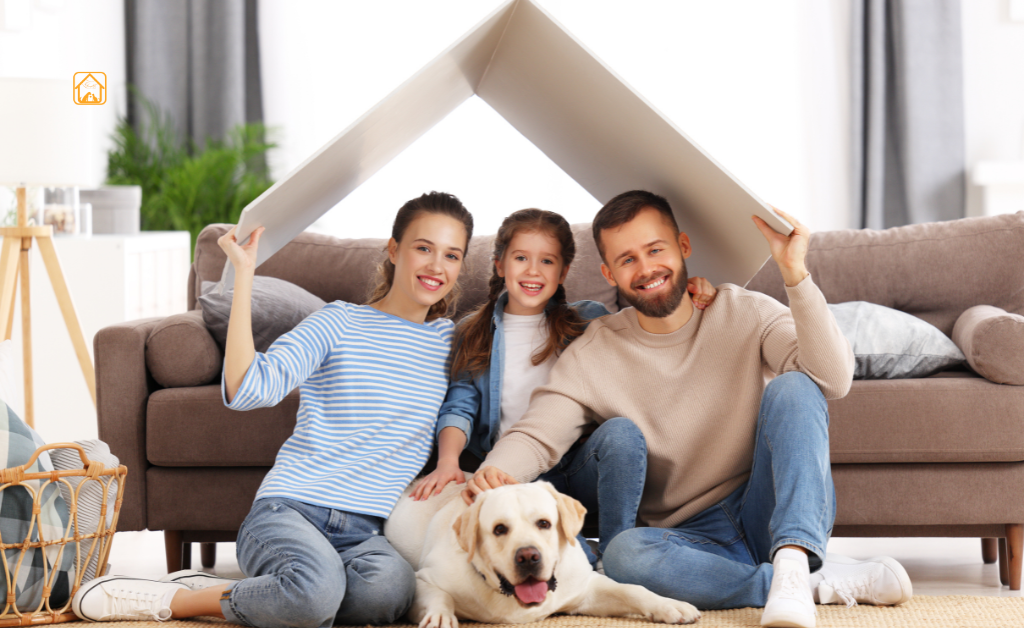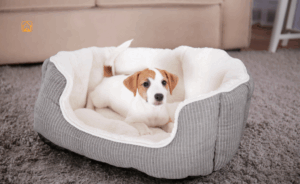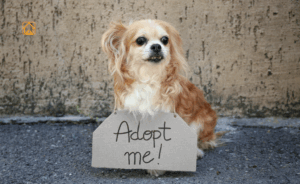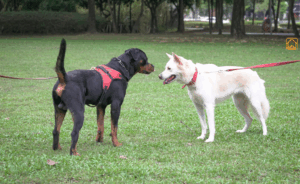Pros and Cons of Getting a New Dog
Benefits and Disadvantages
Let’s be honest, getting a new dog isn’t all puppy kisses and tail wags. Sure, the benefits of having a dog at home are amazing: constant companionship, more exercise, someone who thinks you’re a superhero every time you walk in the door. There are at least 10 reasons to get a dog (probably 20!), from stress relief to teaching kids responsibility.
- Pros: Unconditional love, improved mental health, daily activity, family bonding, and a loyal friend.
- Cons: Costs (food, vet visits, insurance), time commitment, travel restrictions, allergies, and sometimes the mess (ever stepped in a puddle at 2am?).
Think about your daily routine. Do you have time for walks, training, and play? Do you travel often? Is your home suitable for a dog’s size and energy? Honestly, I wish someone had told me how much my weekends would revolve around dog parks and muddy paws. If you’re not sure, write down your typical week and see where a dog fits. Sometimes, the disadvantages of having a dog are just about timing and preparation.
How to Choose the Right Dog for Your Lifestyle and Family
This is where the dream gets specific. Picking the right dog isn’t about the cutest face (though honestly, they’re all cute). It’s about a lifelong match, one that fits your pace, your space, and your heart.
- Size: Don’t just fall for puppy eyes! Big dogs grow fast and need more room. Small breeds are portable but sometimes feisty. Think about your space and strength.
- Energy Level: Some dogs are always “on” (think Border Collies), while others prefer snoozing (hello, Bulldogs). How active are you? Will you jog together or binge-watch TV?
- Age: Puppies are adorable, and a handful. Adults or senior dogs may be calmer and already trained. First dog tips: Consider adopting an adult if you want less chaos.
- Temperament: Some breeds are outgoing and social, others shy or independent. Mixed breeds can be wonderful, too. Meet the dog first if you can!
- Grooming Needs: Long-haired breeds need regular brushing and sometimes professional grooming. Short-haired dogs shed, too (trust me, I’m still finding fur from my last pup).
- Health: Certain breeds are prone to specific health issues. Research is key, ask shelters or breeders about common concerns.
Ever wondered about best breeds for first-time dog owners? Here are a few popular choices:
| Breed | Traits |
| Labrador Retriever | Friendly, eager to please, good with kids |
| Golden Retriever | Gentle, sociable, easy to train |
| Cavalier King Charles Spaniel | Affectionate, adaptable, small size |
| Poodle (Standard/Miniature) | Intelligent, low-shedding, versatile |
| Mixed Breed | Unique personalities, often hardy, many options |
But don’t overlook rescues or older dogs, they’re just waiting for a second chance. Shelters can help match you with a dog that fits your vibe and routine. Want a running buddy? Sofa snuggler? There’s a dog out there who’s dreaming of you, too.
One last thing is every dog, no matter the breed, brings its own quirks and magic. If you’re honest about your needs and open to learning, you’ll find the right companion for your journey.
Preparing Your Home for a New Dog: Supplies and Safety Checklist
Dog Essentials for a Smooth Homecoming
Before your new dog sets a paw inside, make your home welcoming and safe. Here’s your new dog checklist:
- Collar & ID Tag: Safety first! Include your phone number and address.
- Leash & Harness: A sturdy leash (6 feet is a good start) and a comfy harness.
- Food & Water Bowls: Stainless steel or ceramic are easy to clean and hard to chew.
- High-Quality Food: Ask the shelter or breeder what your dog’s been eating. Change gradually if needed.
- Bed: Soft, washable, and the right size for snuggles or sprawls.
- Crate: A safe space for rest and training (big enough for your dog to stand and turn around).
- Toys: Chew toys, puzzle feeders, and comfort items. Rotate them to keep things interesting.
- Training Treats: For rewarding good behavior (and winning hearts).
- Brush & Grooming Supplies: The right tools for your dog’s coat type.
- Poop Bags & Scooper: For all those walks (your neighbors will thank you).
- Pet-Safe Cleaner: Accidents happen, especially early on.
Dog-proof your space: secure trash cans, hide wires, remove toxic plants, and block off any escape routes. I once forgot to pick up a loose sock, guess who found it? My dog, of course.
If you’re bringing home a puppy, add puppy pads and baby gates. For adult dogs, focus on comfort and routine. The right supplies make all the difference in helping your new dog adjust.
Bringing Your New Dog Home: The First Day and Week
Getting Settled, One Step at a Time
The first day with your new dog is about calm, comfort, and patience. Try to bring your dog home when things are quiet, ideally, have a few days off work so you’re around. Let your dog explore at their own pace. Don’t rush greetings with neighbors or trips to the park yet.
- Set up one quiet room or space as their safe spot.
- Stick to the same routine, feeding, walks, bedtime.
- Expect accidents or nerves. It’s all new!
I still remember sitting on the floor, offering treats, waiting for my new pup to come closer. Trust builds slowly, so go easy and celebrate small steps, like the first tail wag or nap in their bed.
Introducing a New Dog to Other Pets and Family Members
If you already have pets, careful introductions are key. Wondering how to introduce a new dog to your dog, or a jealous dog?
How to Introduce a New Dog to Your Dog
- Pick Neutral Ground: Meet up somewhere that isn’t anyone’s territory, like a park. This helps prevent territorial squabbles and lets both dogs focus on each other instead of their turf.
- Go for a Parallel Walk: Have a friend or family member help. Walk both dogs side by side, a few feet apart. Let them sniff, but don’t rush the process. The idea is calm curiosity, not chaos.
- Watch Their Body Language: Loose tails, sniffing, and relaxed ears mean things are going well. Tense bodies, growling, hard stares, okay, take a break and give them space.
- Gradually Move Indoors: If outdoor intros go well, do a slow walk home together. Let the new dog explore on leash while your current dog is free to observe. Supervision is your best friend here!
Even if you’re a pro, things can get bumpy. Some dogs make new friends right away, others need time. Be patient and keep sessions short and positive. If you notice possessiveness over toys or food, separate their spaces at first. Give both dogs plenty of love, no one likes feeling replaced!
Introducing a New Dog to a Jealous Dog
- Keep routines consistent for your resident dog (walks, cuddle time, meals).
- Use positive reinforcement. Reward calm, friendly behavior when your dog interacts with the newcomer.
- Don’t force togetherness. Let both dogs have their own space to decompress.
- Supervise play and give breaks if things get too rowdy or tense.
Jealousy is normal at first. But with reassurance and patience, most dogs learn that sharing the spotlight means double the fun (and maybe double the treats, too).
How to Introduce a New Dog to Cats or Small Pets
- Never go straight to face-to-face meetings. Swap bedding or toys so everyone gets used to each other’s scent.
- Feed pets on opposite sides of a closed door to build positive associations.
- When ready, try a controlled introduction, dog on leash, cat with an escape route.
- Always supervise, especially with kittens or small pets. Some dogs have strong prey drives, so safety first!
It might take weeks for peace to settle, but slow and steady wins the race (and keeps your curtains intact).
Introducing a New Dog to Kids and Other Family Members
- Teach kids to approach calmly, no squealing or sudden hugs.
- Show them how to offer a hand for sniffing and avoid the dog’s face or tail.
- Never leave young children and a new dog unsupervised.
- Let your new dog explore at their own pace. Some will seek snuggles right away, others need time to build trust.
It’s all about setting up safe, positive interactions. Remind everyone that the new dog’s world just flipped upside down, so patience and kindness go a long way.
Establishing Routines: Feeding, Exercise, and Training Basics
Consistency Builds Confidence
Routines help your new dog adjust. Set feeding times, walk schedules, and potty breaks. Use the same words for commands. Positive reinforcement, praise, treats, works wonders for training.
- Feed high-quality food at regular times.
- Plan daily exercise that matches your dog’s energy.
- Short, fun training sessions build trust and good habits.
If you’re new to training, consider a basic obedience class. Early routines can prevent boredom behaviors, like chewing shoes or barking at shadows. Honestly, a tired dog is a happy and well-behaved dog.
First Vet Visit and Health Essentials for Your New Dog
Health Comes First
Schedule your first vet visit within a week of bringing your new dog home. Bring any medical records you have. Your vet will check for vaccinations, microchip, parasites, and general health.
- Ask about flea, tick, and heartworm prevention.
- Discuss spay/neuter options if not already done (for adult dogs).
- Plan booster shots and yearly checkups.
Use this visit to ask about diet, exercise, and dental care. Your vet is your partner in keeping your new dog healthy for years to come.
Common Mistakes to Avoid When Getting a New Dog
- Rushing introductions to pets or people
- Skipping dog-proofing your home
- Inconsistent routines for feeding or walks
- Expecting instant bonding or perfect behavior
- Neglecting early training or socialization
You know what’s funny? My biggest mistake was thinking my first dog would just “fit in” without effort. It takes patience and a little humility, but every small win feels huge. Avoid these common mistakes, and you’ll both be happier for it.
FAQs About Getting a New Dog
What supplies do I need for a new dog?
You’ll need a collar with ID, leash, food and water bowls, dog bed, crate, quality food, a few toys, and grooming supplies. If you’re getting a puppy, add puppy pads and gates.
How do I introduce a new dog to my current dog?
Start introductions on neutral ground, both dogs on leash. Watch for calm signals, keep sessions short, and use treats. Gradually increase time together. Never force interactions, patience pays off.
How long does the new dog adjustment period last?
Every dog is different, but most adjust within a few weeks to a couple of months. Routine, patience, and gentle encouragement can help your dog settle in faster. Some rescue dogs may need extra time.
What should I do on the first day with my new dog?
Keep things calm and quiet. Let your dog explore one area, offer water and a meal, and give them time to rest. Don’t invite visitors yet. Stick to a routine for meals and potty breaks.
Is getting a dog worth it?
For most people, the rewards outweigh the challenges. Dogs bring love, laughter, and loyalty, but you’ll need to commit time, money, and energy. If you’re ready to care for a living being, the joy is hard to match.
What are mistakes to avoid when getting a new dog?
Don’t skip preparing your home, rush introductions, or expect instant perfection. Avoid overfeeding due to excitement and don’t neglect early vet visits. Take learning step by step, every dog is different!
How do I choose the right dog for my lifestyle?
Think about your activity level, home space, and family needs. Some breeds need lots of exercise, others are more laid-back. Talk to shelter staff or breeders and be honest about your routine.
Ready to welcome a new dog? Take it slow, enjoy the journey, and remember, you’re not alone. Every wag and cuddle is worth the effort.
Conclusion
Getting a new dog isn’t just about toys and treats, it’s about building trust, setting routines, and showing up every day. It takes patience and heart, but the bond you create is worth everything. Start with care, stay consistent, and soon, your new dog will feel exactly where they belong (Happy Home).



